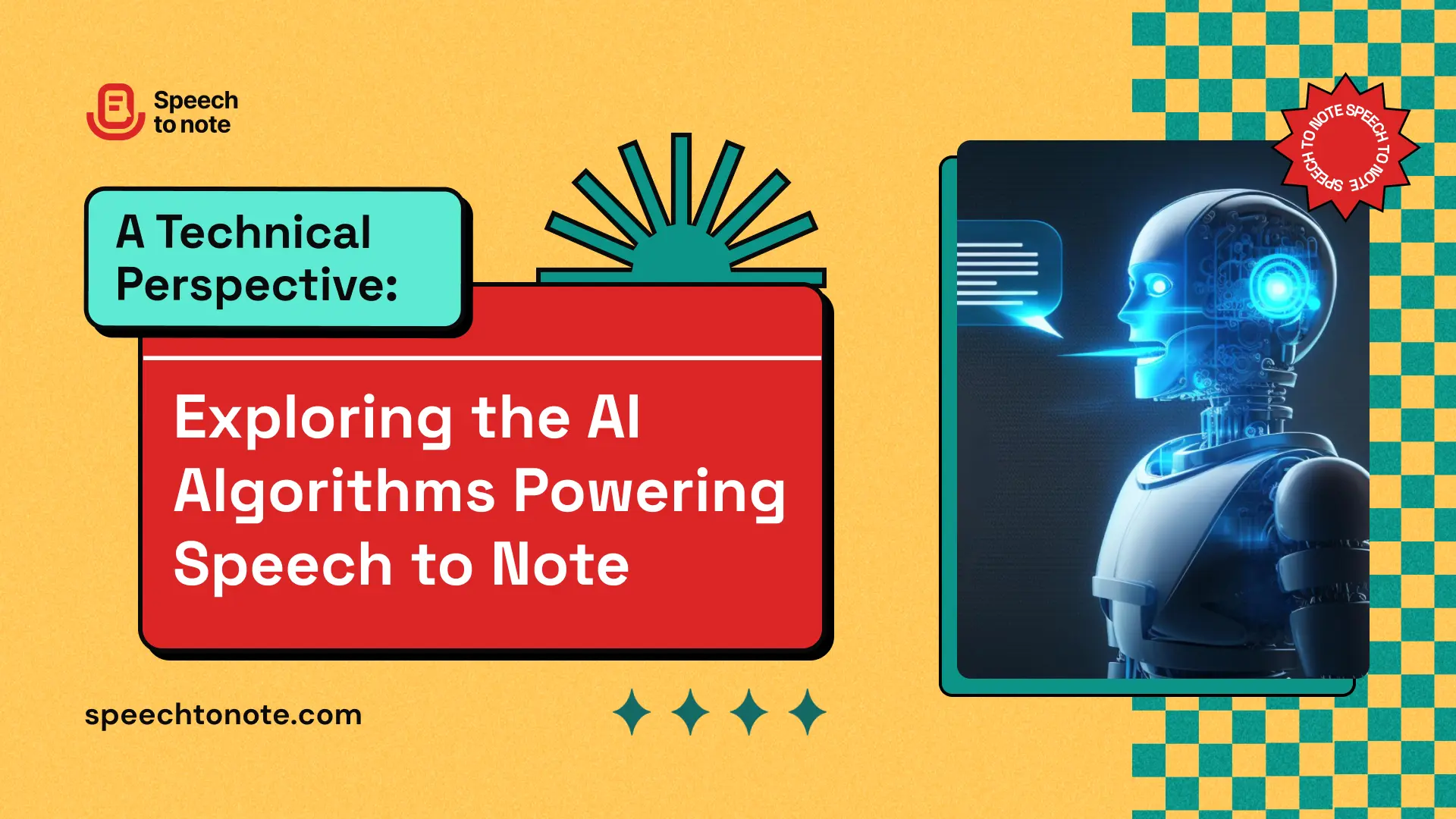November 18, 2023
In today’s fast-paced world, technology has become an integral part of our daily lives, greatly influencing how we communicate, work and even think. One such technology that has seen enormous development in recent years is Artificial Intelligence (AI). And one of the most innovative applications of AI is the ability to convert spoken language into written text, a technology at the heart of tools like Speech to Note.
The Power of AI in Speech to Note
AI technologies, particularly machine learning (ML) and natural language processing (NLP), have redefined the ways we handle and process information. Speech to Note leverages these technologies to transform your spoken words into clear, concise written notes. But how exactly does this work?
At its core, Speech to Note uses AI algorithms to interpret human speech, comprehend the context, and then accurately convert the vocal input into text. This process involves two primary steps: Speech Recognition and Natural Language Understanding.
Speech Recognition: Converting Sound Waves into Text
The first step is to take the spoken words and turn them into written text in real time. This process, known as Automatic Speech Recognition (ASR), involves complex ML algorithms that break down speech into phonemes (distinct units of sound), recognize patterns in the sound data, and then map these patterns to the right words in the chosen language.
AI models for ASR are usually trained on vast databases of human speech across different accents, dialects, and languages. This extensive training allows the algorithms to accurately recognize and transcribe a wide variety of speech inputs.
Natural Language Understanding: Making Sense of the Text
Once the ASR system has transcribed the speech into text, the real magic begins. Now it’s time for the AI to understand the context of the text and structure it into meaningful notes.
This is where NLP comes in. NLP refers to the branch of AI that deals with the interaction between computers and humans through natural language. One of the main components of NLP is Natural Language Understanding (NLU), which allows the system to understand the context, sentiment, and intent behind the words.
With NLU, Speech to Note can distinguish between different speakers, identify important points, and even ignore irrelevant information. It then structures and summarizes the notes based on the user’s preferences.
AI’s Role in the Future of Note-taking
AI algorithms have the potential to revolutionize how we take and manage notes. Not only do they offer a hands-free method of recording information, but they also allow users to focus on the conversation at hand without worrying about capturing every detail.
While we’ve made significant strides in enhancing Speech to Note’s capabilities, the journey is far from over. As AI algorithms become more sophisticated, so too will the accuracy, efficiency, and personalization of tools like Speech to Note.
In a nutshell, AI-powered tools like Speech to Note are heralding a new era in note-taking, providing people with the ability to effortlessly capture and manage important information. As we continue to explore and innovate, one thing is certain: the future of note-taking is here, and it’s powered by AI.
We are offering a 7-Days Free Trial on Pro Plan of Speech to Note. Grab the offer now by clicking here: Get 7 Days Free Trial.



